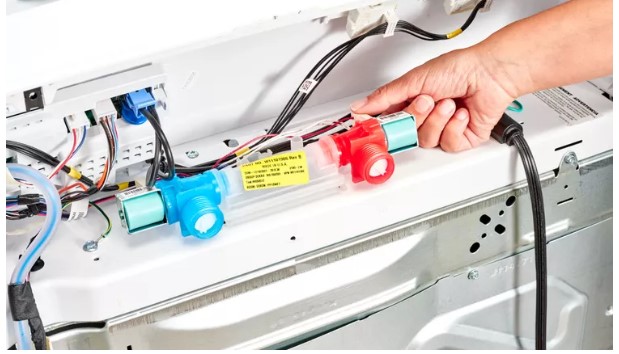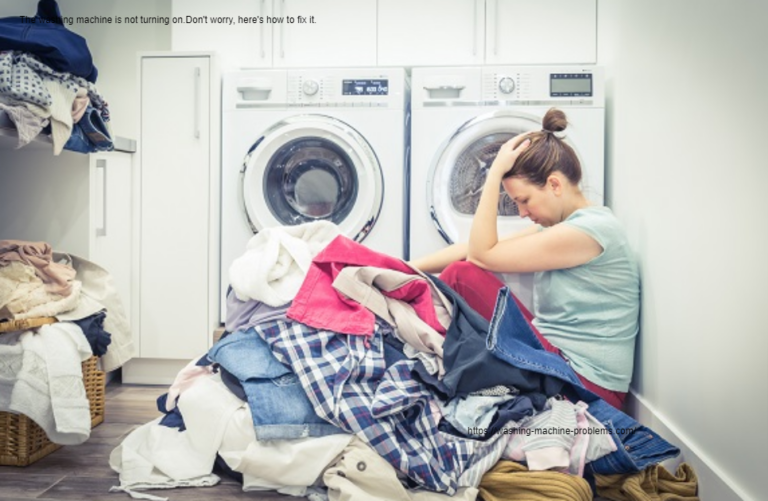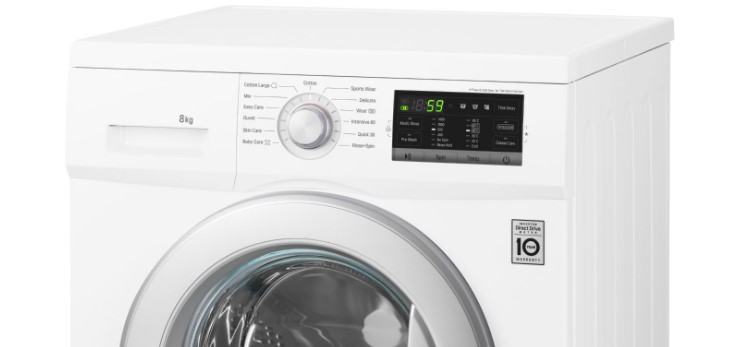Check Valve on Washing Machine – Maintenance Tips

Table of Contents
Giving proper attention to the maintenance of the check valve on your washing machine is crucial for its efficient functioning. By following these maintenance tips, you can ensure that your washing machine operates smoothly and prevents water backup.
Key Takeaways:
- Regular maintenance of the check valve is essential for a properly functioning washing machine.
- Understanding the purpose and role of check valves in washing machines is critical for effective maintenance.
- Being aware of signs that indicate a malfunctioning check valve can help you address the issue promptly.
- Cleaning and maintaining the check valve according to manufacturer guidelines is necessary for longevity.
- Additional tips, such as addressing clogs and monitoring water pressure, can further enhance check valve maintenance.
Understanding Check Valves on Washing Machines
Before we delve into maintenance tips, it’s crucial to understand the role of check valves in washing machines and how they function. Check valves are essential components designed to prevent water from flowing backward, ensuring the efficient operation of your washing machine.
The primary purpose of a check valve in a washing machine is to allow water to flow in one direction while preventing it from flowing back into the plumbing system. This is particularly important during the different stages of the wash cycle, such as filling the drum with water and draining it.
By employing a simple mechanical design, check valves utilize a hinged flap or a spring-loaded mechanism to control water flow. When water enters the washing machine, the valve opens, allowing it to pass through. On the other hand, when water tries to flow back, the valve closes, effectively blocking any reverse flow.
Check valves play a critical role in preventing issues such as water backup, flooding, and potential damage to the washing machine and surrounding plumbing. They ensure that water only flows in the desired direction, facilitating smooth and efficient operation.
Now that we understand the importance of checking valves in washing machines, we can move on to exploring essential maintenance tips to keep them functioning optimally.
Signs of a Malfunctioning Check Valve
Detecting a malfunctioning check valve is essential to timely maintenance. By recognizing these signs early on, you can address the problem before it leads to significant water backup within your washing machine.
Here are some common indicators that your check valve may be malfunctioning:
- Water backing up: One of the telltale signs of a malfunctioning check valve is water backing up into your washing machine when it’s not in use. If you notice water pooling or rising in the drum between washes, it could be a sign that the check valve is failing to close properly, allowing water to flow back.
- Inconsistent water levels: Another sign to watch for is inconsistent water levels during the washing cycle. If the water level fluctuates noticeably or doesn’t reach the appropriate level, it could indicate a malfunctioning check valve.
- Slow drain: A malfunctioning check valve can also cause slow drainage. Suppose you observe that water takes longer than usual to drain from your washing machine after a cycle. In that case, it may be a sign that the check valve is not functioning correctly, restricting the flow of water.
It’s essential to take note of these signs and address any check valve issues promptly. Ignoring or delaying maintenance can lead to further damage and costly repairs. If you suspect a malfunctioning check valve, it’s advisable to consult a professional technician to diagnose and fix the problem.
Maintaining the Check Valve on Your Washing Machine
Proper maintenance is crucial to ensure that the check valve on your washing machine remains in good working condition. By following these step-by-step instructions, you can effectively clean and maintain the check valve, prolonging its lifespan and preventing unwanted backup.
1. Shut off the water supply: Before beginning any maintenance tasks, turn off the water supply to your washing machine to avoid any potential leaks or accidents.
2. Locate the check valve: Familiarize yourself with the location of the check valve. It is typically found near the water inlet hose at the back of the washing machine.
3. Remove the check valve: Carefully disconnect the water inlet hose from the check valve. Use pliers if necessary to loosen any tight fittings. Once disconnected, remove the check valve from the washing machine.
4. Clean the check valve: Fill a bowl or basin with warm water and a mild detergent. Place the check valve in the bowl and gently scrub it using a soft brush or cloth. Pay close attention to any debris or buildup on the valve components.
5. Rinse and dry: Once the check valve is clean, rinse it thoroughly under running water to remove any soap residue. Shake off any excess water and allow the valve to air dry completely before reassembling.
6. Reassemble and reconnect: Carefully reattach the check valve to the washing machine, ensuring that all fittings are secure. Reconnect the water inlet hose, making sure it is tightly fastened.
7. Turn on the water supply: Once the check valve is reassembled and securely connected, turn on the water supply to your washing machine. Check for any leaks or irregularities in water flow.
8. Regular maintenance: To maintain the check valve’s optimal performance, it is recommended to clean it every 6-12 months or more frequently if you notice any issues with water flow or drainage.
| Benefits of Maintaining the Check Valve | Consequences of Neglecting Maintenance |
| Prevents water backup | Water damage to the washing machine |
| Ensures efficient functioning of the washing machine | Poor washing performance |
| Prolongs the lifespan of the check valve | Check valve failure |
By consistently maintaining the check valve on your washing machine, you can avoid costly repairs and ensure the smooth operation of your appliance. Incorporate these maintenance tips into your routine to keep your washing machine in optimal condition and enjoy years of hassle-free laundry.
Additional Tips for Check Valve Maintenance
Aside from regular cleaning, there are several additional tips and considerations you can keep in mind to ensure optimal maintenance of the check valve on your washing machine. By taking these preventive measures, you can prolong the life of your check valve and avoid potential issues in the future.
Addressing Clogs
Clogs can significantly impact the functioning of your check valve. To prevent clogs, make sure to clear the drain hose regularly and remove any debris that may have accumulated. Additionally, consider using a lint catcher or filter on your washing machine’s drain hose to catch lint and other debris before it reaches the check valve.
Checking Water Pressure
Monitoring the water pressure in your washing machine is essential for the proper functioning of the check valve. High water pressure can put excessive strain on the valve, leading to premature wear and possible failure. Use a pressure gauge to measure the water pressure coming into your washing machine and ensure it falls within the recommended range specified by the manufacturer.
Regular Inspection
Performing routine inspections of your check valve can help identify any signs of damage or deterioration early on. Check for leaks, cracks, or any visible wear and tear. If you notice any issues, address them promptly by replacing the faulty parts or seeking professional assistance.
Maintaining Good Water Quality
Poor water quality can negatively impact the performance and lifespan of your check valve. Suppose you live in an area with hard water or mineral deposits. In that case, it’s advisable to use a water softener or a filter system to remove impurities. This will help prevent mineral buildup within the valve and ensure smooth water flow.
Follow the Manufacturer’s Guidelines
Always refer to the manufacturer’s guidelines and recommendations for proper check valve maintenance. They may provide specific instructions regarding cleaning agents, frequency of maintenance, and other relevant information. Adhering to these guidelines can help maximize the efficiency and longevity of your check valve.
By implementing these additional tips for check valve maintenance, you can ensure the continued smooth operation of your washing machine and avoid potential issues down the line.
Conclusion
In conclusion, maintaining the check valve on your washing machine is essential for preventing water backup and ensuring smooth operation. By following the maintenance tips provided in this article, you can keep your check valve in optimal condition and avoid potential issues in the future.
Regularly inspecting and cleaning your check valve will help preserve its functionality and prolong its lifespan. Remember to check for any signs of malfunction, such as water flow issues or unusual noises, and address them promptly to prevent further damage.
By taking proactive measures to maintain your check valve, you can enjoy hassle-free laundry days and avoid costly repairs or replacements. Keep your washing machine running efficiently by giving proper attention to its check valve – an often overlooked but crucial component.
What is the purpose of a check valve in a washing machine?
A check valve in a washing machine prevents water from flowing backward, ensuring that water flows in the correct direction during the wash cycle.
How can I tell if there is an issue with my check valve?
Common signs of a malfunctioning check valve include water backup, slow draining, or unusual noises during the wash cycle.
How often should I clean and maintain the check valve?
It is recommended that you clean and maintain the check valve on your washing machine at least once every six months to ensure optimal performance.
What is the proper way to clean the check valve?
To clean the check valve:
1. Start by disconnecting the power and water supply to the washing machine.
2. Remove the check valve cover and clean any debris or sediment using a brush and warm, soapy water.
3. Rinse thoroughly before reinstalling the check valve cover.
Are there additional measures I can take to maintain the check valve?
Yes, in addition to regular cleaning, you can prevent clogs by using a lint filter, checking the water pressure regularly, and avoiding overloading the washing machine.
What should I do if I suspect a severe issue with the check valve?
Suppose you suspect a significant issue with the check valve. In that case, it is best to consult a professional technician or contact the manufacturer for assistance and repair.







